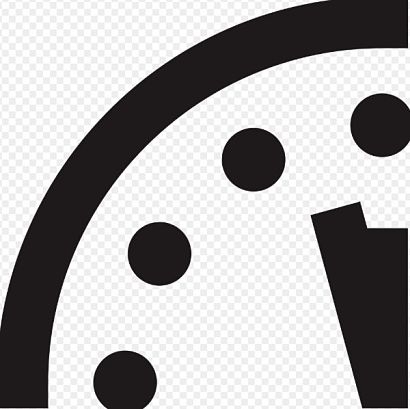
The decision to move the Doomsday Clock to two minutes before midnight was made by the Bulletin of the Atomic Scientists’ Science and Security Board in consultation with the Board of Sponsors, which includes 15 Nobel Laureates. It is the closest that the Doomsday Clock has been to the symbolic point of annihilation since 1953, at the height of the Cold War.
“In 2017, world leaders failed to respond effectively to the looming threats of nuclear war and climate change, making the world security situation more dangerous than it was a year ago—and as dangerous as it has been since World War II” said the accompanying statement.
Although the greatest risks are in the zone of potential nuclear war, avoiding temperature increases in the long run requires attention now, according to the statement. To accomplish this, nations would have to significantly decrease their greenhouse gas emissions. So far, the global response has fallen far short of this challenge.
“The current, extremely dangerous state of world affairs need not be permanent” said Lawrence Krauss, director of the Origins Project at Arizona State University, Foundation Professor at School of Earth and Space Exploration and Physics Department, Arizona State University, and chair, Bulletin of the Atomic Scientists’ Board of Sponsors.
“The means for managing dangerous technology and reducing global-scale risk exist; indeed, many of them are well-known and within society’s reach, if leaders pay reasonable attention to preserving the long-term prospects of humanity, and if citizens demand that they do so. This is a dangerous time, but the danger is of our own making,” Krauss concluded.
Sivan Kartha, senior scientist at the Stockholm Environmental Institute and co-leader of SEI’s Gender and Social Equity Program, and Bulletin of the Atomic Scientists’ Science and Security Board, added that 2017 just clocked in as the hottest year on record that wasn’t boosted by an El Nino.
That matches what has been seen on the ground: the Caribbean suffered a season of historic damage from exceedingly powerful hurricanes, extreme heat waves struck across the globe, the Arctic ice cap hit its lowest winter peak on record, and the US suffered devastating wildfires.
While this was happening, the Trump administration put avowed climate denialists in top cabinet positions and announced plans to withdraw from the Paris Climate Agreement. Other countries have reaffirmed their commitment to take action against climate change.
Alongside the nuclear factors, the recommended action steps urge American citizens to demand, in all legal ways, climate action from the US Government. Furthermore, governments around the world should redouble their efforts to reduce greenhouse gas emissions so they go well beyond the initial pledges under the Paris Agreement. Finally, the international community should establish new protocols to discourage and penalize the misuse of information technology to undermine public trust in political institutions, in the media, and in science.
For additional information:

